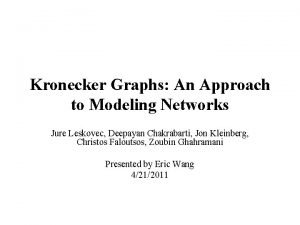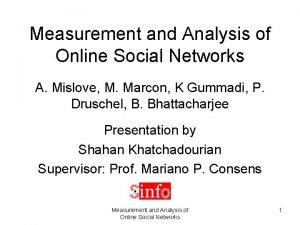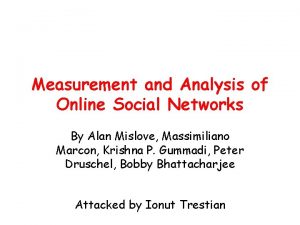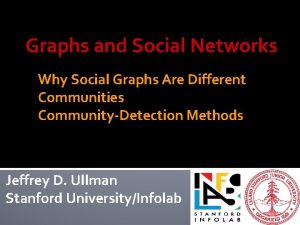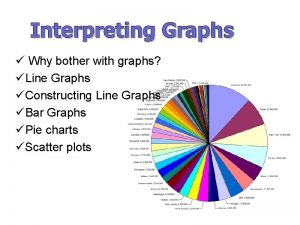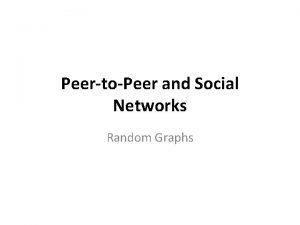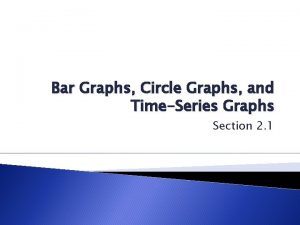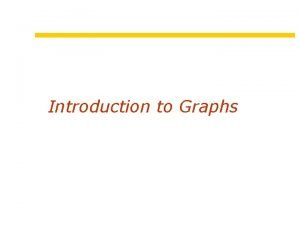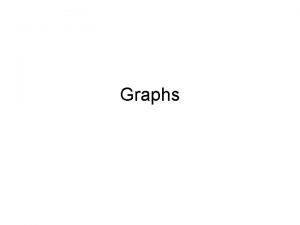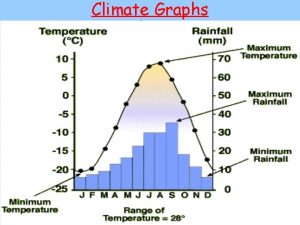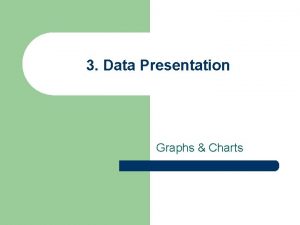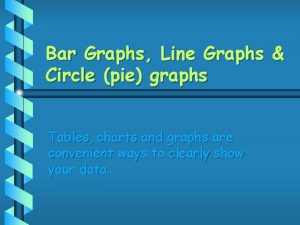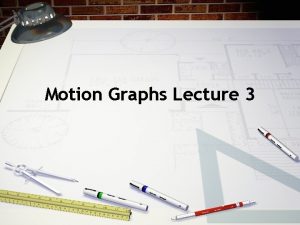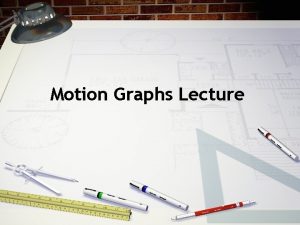Graphs and Social Networks Why Social Graphs Are













- Slides: 13

Graphs and Social Networks Why Social Graphs Are Different Communities Finding Triangles Jeffrey D. Ullman Stanford University/Infolab

Social Graphs �Graphs can be either directed or undirected. �Example: The Facebook “friends” graph (undirected). § Nodes = people; edges between friends. �Example: Twitter followers (directed). § Nodes = people; arcs from a person to one they follow. �Example: Phonecalls (directed, but could be considered undirected as well). § Nodes = phone numbers; arc from caller to callee, or edge between both. 2

Properties of Social Graphs Locality (edges are not randomly chosen, but tend to cluster in “communities”). 2. Small-world property (low diameter = maximum distance from any node to any other). 1. 3

Locality �A graph exhibits locality if when there is an edge from x to y and an edge from y to z, then the probability of an edge from x to z is higher than one would expect given the number of nodes and edges in the graph. �Example: On Facebook, if y is friends with x and z, then there is a good chance x and z are friends. �Community = set of nodes with an unusually high density of edges. 4

It’s a Small World After All �Many very large graphs have small diameter (maximum distance between two nodes). § Called the small world property. �Example: 6 degrees of Kevin Bacon. �Example: “Erdos numbers. ” �Example: Most pairs of Web pages are within 12 links of one another. § But study at Google found pairs of pages whose shortest path has a length about a thousand. 5

Finding Triangles Heavy Hitters Two Kinds of Triangles Optimal Algorithm

Counting Triangles �Why Care? 1. Density of triangles measures maturity of a community. § As communities age, their members tend to connect. 2. The algorithm is actually an example of a recent and powerful theory of optimal join computation. 7

Needed Data Structures �Assume that in O(1) time we can answer the question “is there an edge between nodes x and y? ” § Question for thought: What data structure works? �Assume that if a node x has degree d, then in O(d) time we can find all the nodes adjacent to x. § Question for thought: What data structure works? 8

First Observations �Let the undirected graph have N nodes and M edges. § N < M < N 2. �One approach: Consider all N-choose-3 sets of nodes, and see if there are edges connecting all 3. § An O(N 3) algorithm. �Another approach: consider all edges e and all nodes u and see if both ends of e have edges to u. § An O(MN) algorithm. § Note that can’t be worse than O(N 3). 9

Heavy Hitters �To find a better algorithm, we need to use the concept of a heavy hitter – a node with degree at least M. �Note: there can be no more than 2 M heavy hitters, or the sum of the degrees of all nodes exceeds 2 M. § Remember: sum of node degrees = 2 times the number of edges. �A heavy-hitter triangle is one whose three nodes are all heavy hitters. 10

Finding Heavy-Hitter Triangles �Consider all triples of heavy hitters and see if there are edges between each pair of the three. �Takes time O(M 1. 5), since there is a limit of 2 M on the number of heavy hitters. 11

Finding Other Triangles �At least one node is not a heavy hitter. �Consider each edge e. § If both ends are heavy hitters, ignore. § Otherwise, let end node u not be a heavy hitter. § For each of the at most M nodes v connected to u, see whether v is connected to the other end of e. �Takes time O(M 1. 5). § M edges, and at most O( M) work with each. 12

Optimality of This Algorithm �Both parts take O(M 1. 5) time and together find any triangle in the graph. �For any N and M, you can find a graph with N nodes, M edges, and (M 1. 5) triangles, so no algorithm can do significantly better. �Note that M 1. 5 can never be greater than the running times of the two obvious algorithms with which we began: N 3 and MN. § And if M is strictly between N and N 2, then M 1. 5 is strictly better than either. 13
 Mikael ferm
Mikael ferm Why why why why
Why why why why Networks and graphs: circuits, paths, and graph structures
Networks and graphs: circuits, paths, and graph structures Difference between virtual circuit and datagram subnet
Difference between virtual circuit and datagram subnet Basestore iptv
Basestore iptv Zczc state graph
Zczc state graph Graphs that enlighten and graphs that deceive
Graphs that enlighten and graphs that deceive Kronecker graphs: an approach to modeling networks
Kronecker graphs: an approach to modeling networks Dont ask
Dont ask Speed and velocity
Speed and velocity Which two graphs are graphs of polynomial functions?
Which two graphs are graphs of polynomial functions? Measurement and analysis of online social networks
Measurement and analysis of online social networks Measurement and analysis of online social networks
Measurement and analysis of online social networks Evaluating online groupware in cloud computing
Evaluating online groupware in cloud computing







